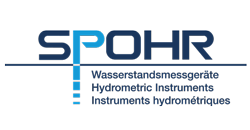Waterloo Multilevel Groundwater Monitoring System*
The Waterloo System is used to obtain groundwater samples, hydraulic head measurements and permeability measurements from many discretely isolated zones in a single borehole.
The Waterloo System originated with Dr. John Cherry at the Groundwater Institute of the University of Waterloo in 1984. Ongoing development and refinement of the System by Solinst has taken place on a continuous basis since then.
Advantages of the Waterloo System
- Detailed depth of flow and concentrations
- Reduced project costs
- Purging and sampling times reduced
- Fewer drilled holes
- Reduced site disturbance
- Variety of monitoring options
- Isolate sampling at discrete contaminant zones
- High-resolution site characterization
* Manufactured under exclusive licence from the University of Waterloo.
Canadian Patent #1232836 U.S. Patent #5048605
International Patents.
Detailed 3-D Data
When a number of Waterloo Systems are used at a site, they allow detailed three-dimensional groundwater information to be obtained at a reasonable cost. Fewer drilled holes are an advantage and monitoring times are reduced.
The modular system can be customized for unique project requirements. This allows monitoring zones to be placed at desired depths using options suitable for either bedrock, overburden or combination applications.
Discrete zone monitoring is the only means of obtaining accurate data for site interpretation and assessments. Transects of Multilevels provide the detailed data necessary to calculate mass flux and conservatively assess risk to receptors.

615ML Multilevel Drive-Point Piezometer

403 CMT® System

401 Waterloo System
Solinst Multilevel Groundwater Monitoring Systems
In addition to the 401 Waterloo System, Solinst Manufactures two other multilevel systems, each suited to different environments and applications.
The 615ML Multilevel Drive-Point Piezometer has stainless steel monitoring ports connected using 3/4” NPT steel drive pipe and couplings. Dual barb stems allow the connection tubing to create up to 3 or 6 monitoring zones, depending on tubing size. Drive-Point Multilevel Systems can be installed simply using direct push methods, including a manual slide hammer. These systems are easy to transport with portable sampling and level monitoring options (see Model 615ML Data Sheet).
The 403 CMT® System consists of continuously extruded polyethylene tubing with seven or three separate channels running its length. Monitoring zones are mechanically created and sealed off, one in each separate channel at different vertical intervals. CMT offers in-field design flexibility, is low cost and easy to install. The 7-Channel System is 1.7” (43 mm) and the 3-Channel is 1.1” (28 mm). They are ideal for shallow applications in narrow diameter boreholes (see Model 403 Data Sheet).
*Manufactured under exclusive license from the University of Waterloo.
Canadian Patent #1232836 U.S. Patent #5048605 & International Patents.
Multi-Port Installations
Overburden or Bedrock Installations
- Allow monitoring of multiple zones in any geologic setting
- Groundwater or vadose zone installationsPermanent Waterloo Packers
- Designed for bedrock or cased holes
- Engineered for permanent seals


 German
German English
English